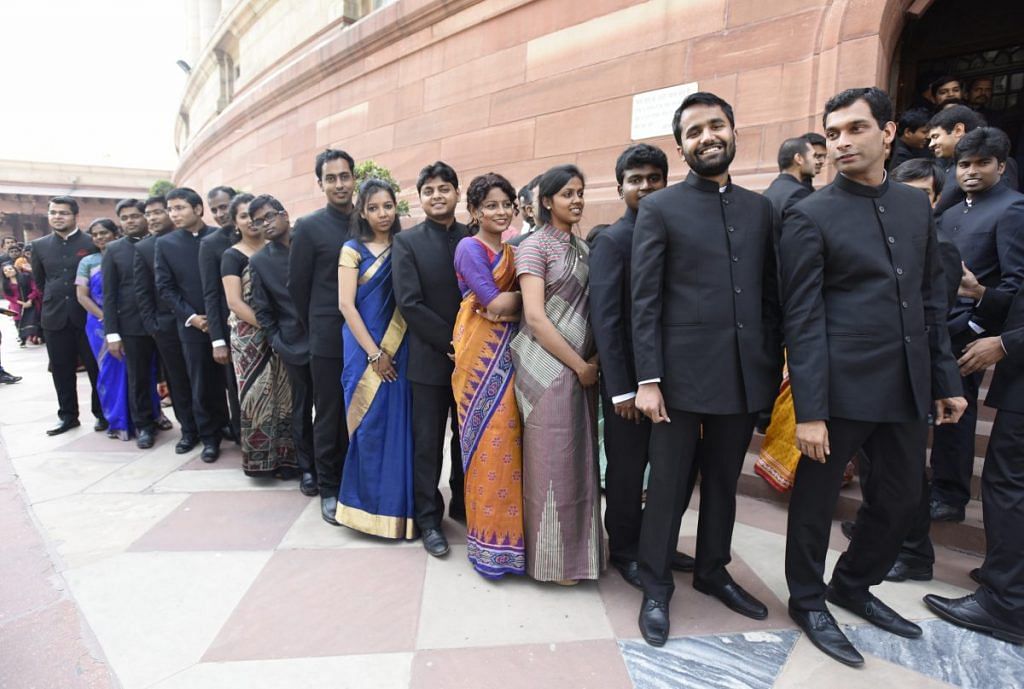It’s a tragedy that inefficiency and non-accountability overtake many at incredibly fast pace after the initial grand entry.
While there are no details about the roles and responsibilities of public servants in the Constitution, their indisputable dominance over governance structures is a given. This stratospheric positioning is bolstered by the iron-clad professional security of Article 311.
No wonder that public servants in India have remained under intense scrutiny, have been treated as objects of curiosity, speculation, muted adulation and often, plain scorn. But of late, the balance has tilted against them and widespread trashing of public servants has acquired cult status as a popular stress-buster.
Also read: This MBA-turned-IRS officer is curing Modi’s ailing scheme for affordable medicines
But is there a quintessential public servant? Public perception would have us believe so. It is a far cry from the British television’s Yes Minister portrayal of public servants as highly intelligent, supremely articulate, witty, admirably competent, albeit a tad supercilious, and contemptuous of their political bosses.
The reasons are not far to seek. The enhanced criminalisation of politics, politicisation of the warp and woof of governance, corrosive impact of crass money power and brazen cronyism, along with unabashed exploitation of caste and identity, have pulverised the public servant beyond recognition.
There is a deep-seated conviction, flowing from the vitiated ecosystem, that the public servant does not place the notion ‘service to the public’ as a pole priority. The derogatory moniker of “babu”, coined by the mainstream media, echoes the negativity aptly and not without considerable relish.
The crème de la crème of our youth give up everything to enter the hallowed portals of public service. It is a tragedy that inefficiency, opacity and non-accountability overtake many at an incredibly fast pace after the initial grand entry. Undoubtedly, there are many great and steady good performers, but they remain largely curtained-off from the public eye. If at all they come in for appreciative notice, they are flagged as exceptions. Such is the extent of cynicism.
Also read: Modi govt’s plan to allow lateral entry into IAS is stuck
Far more disastrous is the scourge of corruption. It has wreaked insidious havoc, top down and bottom up. Antipathy towards public servants is based on bitter experiences, making it impossible to ignore or downplay them. A few years back in Uttar Pradesh, public servants had launched a crusade to flush out the tainted from within. It lost its way, unfortunately, and was crushed by the altered dynamics of a progressively degenerating polity.
To this unseemly mix of red-tapists, we may add the user-friendly doormats or “Ji-Huzoors”, who prefer to anticipate the wish of their political bosses and act out their script with utmost fidelity. This subset is the most preferred category among public servants and, understandably, much in demand. Servility and pliability have climbed up pretty effortlessly in the pecking order of utterly desirable attributes. Maybe, there is a special kind of shredder called ‘self-respect shredder’ in their survival toolkit.
Interestingly, the same supine-marvels are often megalomaniacally monstrous to junior colleagues. If they were to be booked for human rights violations in their organisations, there would be celebrations.
The condescension and arrogance with which many come across in public interactions is a huge turn off. Government may still be the “mai-baap”, but it can ill afford to flaunt an entitled, insensitive and patronising mien. When this is juxtaposed with the fading glory of having cracked the grandmother-of- all competitive exams, without noteworthy qualitative upgrades thereafter, it can only result in disappointing outcomes.
Playing it safe has many takers. To plod along, or sitting it out till the next move up the ladder, has a unique allure. There are assured gains, without risks. There is no need whatsoever to bedazzle with brilliance. All that is required is to cruise along, luxuriating in comforts generously bestowed at tax-payers’ expense and rock no boats. This is an enviable, unending relax mode, which is easy to get hooked on to.
To be a mere entry in the Civil List, year-on- year, is fine, comforted in the knowledge that there is no Damocles’ sword hanging over a damaging clutch of NPAs.
Also read: India faces severe shortage of IAS officers despite Modi govt’s recruitment spree
There are few though who actually go into hibernation. After all, our philosophy has ingrained in us the myriad virtues of being in-it and yet not-in-it. Why not revel in it while the going is good?
The movers and shakers, of course, grab the limelight and are the toast of the upper crust. They have marvellous staying power, managing to vault from one key assignment to another. Extensions come easy and no one of consequence dares protest.
This, by the way, is only a teaser. Please note, the great “babu-biradari” has nothing quintessential to it.
The authors are retired civil servants.
